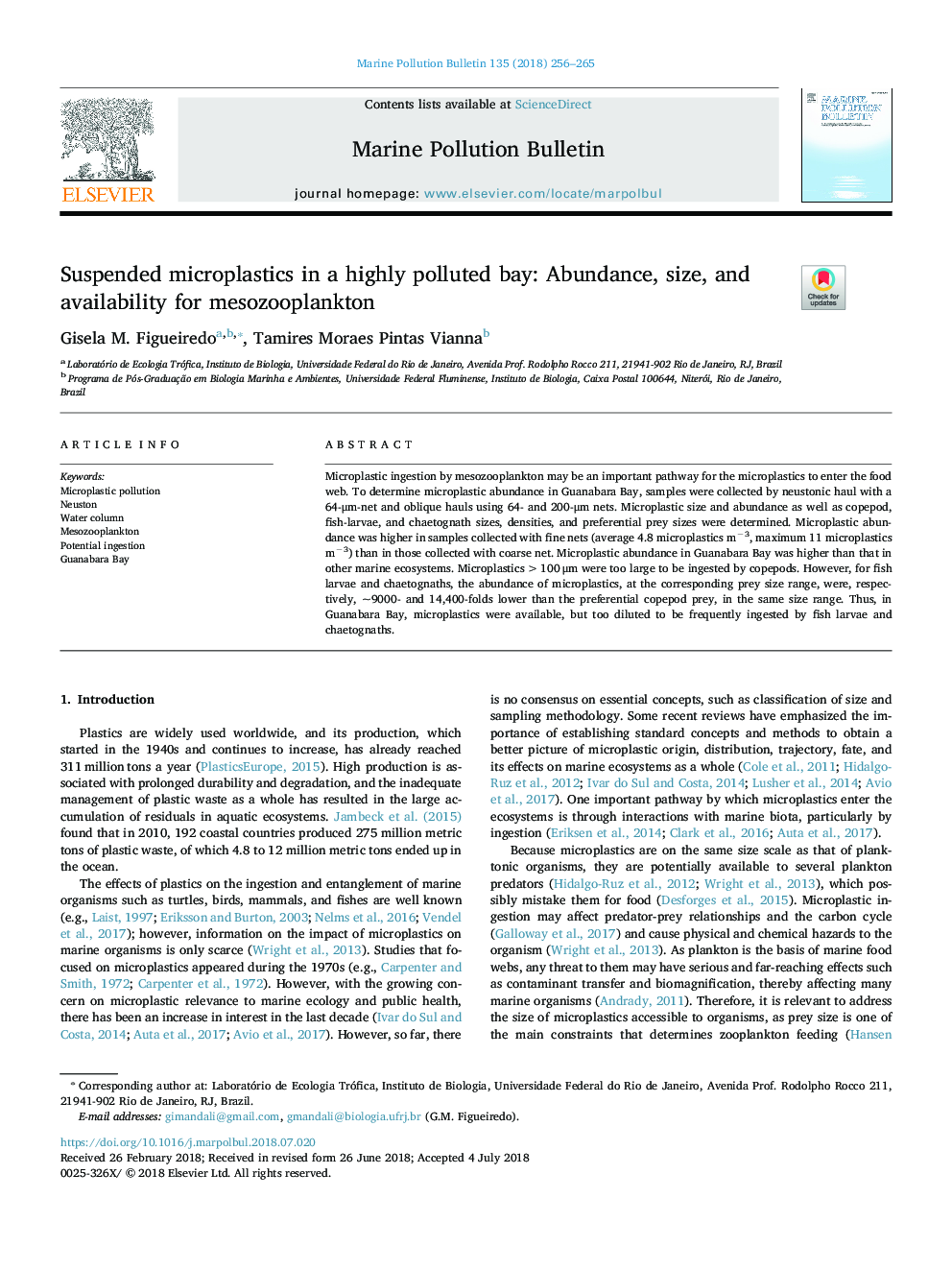| Article ID | Journal | Published Year | Pages | File Type |
|---|---|---|---|---|
| 8870668 | Marine Pollution Bulletin | 2018 | 10 Pages |
Abstract
Microplastic ingestion by mesozooplankton may be an important pathway for the microplastics to enter the food web. To determine microplastic abundance in Guanabara Bay, samples were collected by neustonic haul with a 64-μm-net and oblique hauls using 64- and 200-μm nets. Microplastic size and abundance as well as copepod, fish-larvae, and chaetognath sizes, densities, and preferential prey sizes were determined. Microplastic abundance was higher in samples collected with fine nets (average 4.8 microplastics mâ3, maximum 11 microplastics mâ3) than in those collected with coarse net. Microplastic abundance in Guanabara Bay was higher than that in other marine ecosystems. Microplastics >100â¯Î¼m were too large to be ingested by copepods. However, for fish larvae and chaetognaths, the abundance of microplastics, at the corresponding prey size range, were, respectively, ~9000- and 14,400-folds lower than the preferential copepod prey, in the same size range. Thus, in Guanabara Bay, microplastics were available, but too diluted to be frequently ingested by fish larvae and chaetognaths.
Related Topics
Physical Sciences and Engineering
Earth and Planetary Sciences
Oceanography
Authors
Gisela M. Figueiredo, Tamires Moraes Pintas Vianna,
